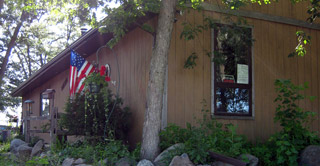
Fish
On the Water
Supplies Needed: Cooler, Ice, camera
The key to presenting a mountable fish to your taxidermist is landing it cleanly and keeping it cool. Use a quality net to land the fish and once in the boat or on land do not allow the fish to damage fins/scales by thrashing around. Take multiple pictures of the fish as soon as possible after landing the fish. Good reference photos help the taxidermist accurately recreate your trophy. Place the fish in the coldest location possible, preferably on ice. Never gut a fish mount or leave it in the sun.
Catch and Release
If you want to have a reproduction done of your trophy, measure the fish from the tip of the nose to the end of the pinched tail and around the belly at the largest girth.
When you get home
The best option is to drop the fish off by you taxidermist on the way home. If you can’t drop the fish off it is best to wrap the fish in a wet cloth towel, place in a garbage bag, and lay flat in the freezer. Make sure all fins, other than the tail, are smooth against the body.
Birds
In the Field
Supplies Needed: Paper towel or old towel/t-shirt, nylon
If possible, gently rinse blood from the feathers, otherwise gently wipe blood from the feathers. Smooth out the feathers and place into a plastic bag to help protect the feathers. Even in fall weather, birds left out all day may begin to lose feathers. Keep the bird cool and out of the sun.
When you get home
Gently rise the bird off under cold clean water. Inspect potential mounts carefully. Birds with excessive pinfeathers and badly shot up make poor mounts. When in doubt, bring the bird to a taxidermist before it is frozen so they can check it. Place the bird in a plastic bag on a bed of ice in a cooler or in the refrigerator overnight. If it will be longer than a day to get the bird to your taxidermist, place the birds head under its wing and slide, front of the body first, into a nylon legging. Check that the head is still under the wing then place in a plastic bag, tie shut, and freeze. If it is a pheasant close bag by loosely placing a zip tie around the base of the tail.
Mammals
In the field
Any mammal that you would like to have mounted smaller than a coyote should be handled carefully and placed in a cool location as soon as possible after harvesting. Soak up as much blood as possible with paper towel. Carnivores tend to decompose especially quickly. If you cannot immediately get it to a freezer or taxidermist, ball up the carcass and wrap the tail around the body the best you can to make it more freezer friendly once rigor mortis sets in.
At Home
Make sure any blood that isn’t dry is removed with a paper towel then place the carcass in a plastic bag, tie, and put in the freezer. If the carcass is not yet cool, leave the bag open in the freezer for a few hours to help accelerate the cooling process.


